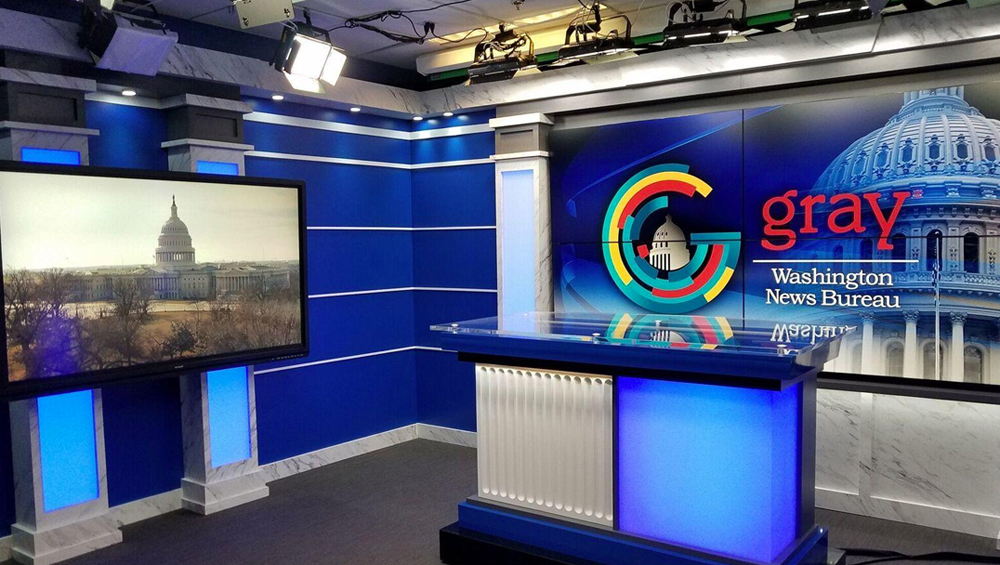
Gray Upbeat On Raycom Synergies, Political

Gray Television has boosted its guidance to Wall Street on financial synergies as it incorporates the Raycom stations into its portfolio. Execs are also upbeat on the coming political advertising windfall, even as they lament softness in non-political national spot.
“We continue to see improvement in general market conditions over the prior quarter, building the trend that began last summer,” said Co-CEO Pat LaPlatney in Gray’s quarterly analyst call to discuss its second quarter earnings.
“While we remain disappointed with the weakness in national ad revenue, especially the auto sector, we’ve been pleasantly surprised by the strength in other categories, notably legal and financial, as well as more and widespread demand for political advertising than we expected during this off year of the cycle.”
LaPlatney said Gray is already seeing political spending in states with early primaries for the 2020 Democratic presidential contest.
“Although the number is not yet significant, we find it encouraging to see any spending this far out,” he noted. Gray also benefitted from gubernatorial races in Kentucky, Louisiana and Mississippi, along with two statewide issues and a special House election in North Carolina.
“We expect political revenues to grow in each of the next two quarters,” LaPlatney said, ahead of the ramp-up for the 2020 federal election. And while he noted reports circulating on just how big the spending will be next year, Gray is not yet projecting 2020 political revenues.
“Nonetheless, we believe that we have the right stations in the right markets to capitalize on the majority of the most competitive races that will take place next year,” he said.
For the third quarter, CFO James Gray said to expect local broadcast revenues to be flat, with national down modestly. Retrans revenues are expected to be up $30 million-$32 million. That follows a $37 million increase in the second quarter, although Ryan had to apologize to analysts for having projected an even greater gain, which he blamed on issues with incorporating the Raycom stations into Gray’s forecasting models.
Gray Chairman-CEO Hilton Howell said the Raycom acquisition is proving even better than expected. He announced that first-year synergies are now projected to amount to $85 million in savings, up from the previous estimate of $80 million.
“And I personally believe there will be more to come,” he added. The new tally is attributed to $42 million in savings on payroll and $43 million from contract synergies.
Noting the current satellite MVPD blackouts in the news, analyst Jim Goss of Barrington Research wanted to know whether Gray is experiencing more pushback from distributors as it negotiates retrans deals.
Gray Chief Legal and Development Officer Kevin Latek insisted that there’s still a long way to go for broadcasters to increase retrans payments. And, while he acknowledged the current blackouts, which he attributed to “one big MVPD,” he added that “people are still getting deals done with other distributors.”
On the other side of the coin, Gray is in the midst of renegotiating its affiliation deal for its Fox stations. And while the parties have agreed on the reverse-comp number for 2019, negotiations continue on other terms, which is why Gray cannot yet project its total payments to networks in 2020.
Goss noted that the percentage of retrans fees passed on to the major networks has gradually been increasing, with Gray currently passing nearly 53% of its retrans revenues to the nets, while keeping 47%. So the analyst wanted to know whether the split will keep changing to benefit the network side.
Latek replied that Gray kept 100% of $20 million in retrans revenues in 2008, but now gets 47% of a much larger pie.
“We are managing the company for the money that we deposit in the bank, not the margin,” Latek said, noting that net retrans has been growing and will continue to grow going forward.
“The networks need to spend more money to secure programming in a more competitive programming environment. At the same time, we all need to get compensated for the value of the programming that we are delivering. At the end of the day, the network-affiliate margins are going to change — because they have changed every single year since 2008,” Latek explained.
































Comments (0)